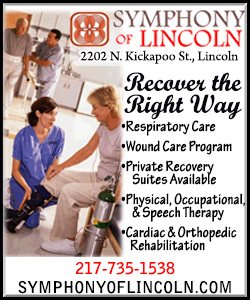|
 “Falls are complex and happen for a variety of
reasons,” said Rebecca Parker, MD, FACEP, president of the American
College of Emergency Physicians. “But there are common steps that
can be taken right now to greatly decrease your risk of falling for
the first time, including those who have fallen multiple times.” “Falls are complex and happen for a variety of
reasons,” said Rebecca Parker, MD, FACEP, president of the American
College of Emergency Physicians. “But there are common steps that
can be taken right now to greatly decrease your risk of falling for
the first time, including those who have fallen multiple times.”
Emergency physicians have created a video designed to give people
who have fallen in the past — especially the more vulnerable elderly
population — easy steps to avoid future falls. It’s called the “7
Step Fall Challenge.” Emergency physicians are confident that by
following these steps, you will greatly decrease your risk of
falling, especially repeat falling.
Step 1: Strength and Balance
Focus on improving strength and balance by exercising regularly.
Several options include Tai Chi, Yoga and other exercises that
improve flexibility and endurance.

Step 2: Home Safety
Over half of falls occur in homes. Remove trip hazards, like boxes
and furniture, from heavy traffic areas. Create a wide pathway
between rooms.
Make sure loose carpets and rugs are secure and that cords are taped
down or removed. Never stand on chairs or stools to reach for items.
Install safety rails in bathrooms and night lights in hallways,
bedrooms and bathrooms.
Step 3: Medication
Many medications can make you feel lightheaded, dizzy or sleepy,
which can increase your risk of falling. If you have these side
effects from certain medications, work with your doctor or
pharmacist to find other options that might be available.
Step 4: Vision
As we age, our vision changes. It may become more difficult to see
things. Get your eyes checked every year.
Step 5: Dehydration
Dehydration can lead to dizziness and confusion. Often, we don’t
drink as much water as we need. Unless you are told otherwise by a
doctor, try to drink 6-8 glasses of water a day.
[to top of second column] |

Step 6: Feet and Footwear
Supportive footwear is extremely important for preventing falls. Poor-fitting
shoes, clogs, flip-flops and heels will increase your risk of falling.
Always wear supportive and comfortable shoes while walking. Talk to your doctor
about seeing a podiatrist, or foot doctor, especially if you have decreased
feeling in your feet from diabetes or other medical conditions.
Step 7: What to Do If You Fall
If you start to fall, try to relax your body to reduce the impact. Tuck your
chin to protect your head and roll as you land to spread out the force of the
fall. Stay calm and do not try to get up too quickly.
Always keep a mobile or cordless phone with emergency numbers within easy reach.
If you’ve fallen before, talk to your doctor about getting a fall alert system.
This is a bracelet or necklace that will alert local emergency medical services,
or EMS, if you fall.
Once a person has fallen once, his or her risk of falling again is twice as
high. For more information,
please watch this video
and share it with those you believe are at greatest risk of falling.
[ AMERICAN COLLEGE OF EMERGENCY PHYSICIANS]
ACEP is the national medical specialty society representing
emergency medicine. ACEP is committed to advancing emergency care
through continuing education, research and public education.
Headquartered in Dallas, Texas, ACEP has 53 chapters representing
each state, as well as Puerto Rico and the District of Columbia. A
Government Services Chapter represents emergency physicians employed
by military branches and other government agencies.
 |